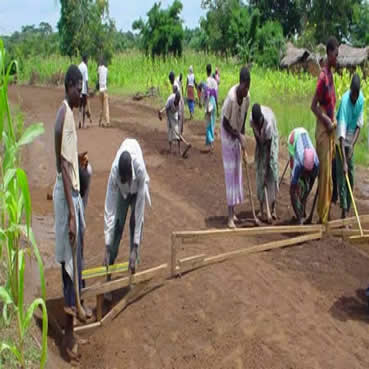RURAL TRANSPORT SUB-SECTOR
Improved rural accessibility has a direct link to reductions in rural poverty and is, therefore, of high importance to the d velopment of Malawi. The coverage of road network in rural areas remains insufficient, in addition to the poor condition of the existing rural road infrastructure.
Rura l transportation provides connectivity between production areas to markets and accessibility to social services which has a great impact on the livelihoods of the rural po r. 3 = Non-motorised transport, such as bicycles, oxcarts, handcarts, walking and wheelbarrows, is the most common mode of transporting goods and services in rural areas. Low levels of income constrain the ability of people in rural areas to acquire better transport means. Communities along the lake, particularly in those areas that are inaccessible by road, use canoes as a means of transporting people and goods.
Rural roads are generally of earth or gravel standard, and of low quality. Funding for the required levels of maintenance is a challenge and consequently, the levels of motorised public transport services are low. The decentralisation process will assist in improving the condition of rural roads by ensuring that technical advice is provided, and that district councils take on more responsibility of the roads under their jurisdiction.
Rura l transportation provides connectivity between production areas to markets and accessibility to social services which has a great impact on the livelihoods of the rural po r. 3 = Non-motorised transport, such as bicycles, oxcarts, handcarts, walking and wheelbarrows, is the most common mode of transporting goods and services in rural areas. Low levels of income constrain the ability of people in rural areas to acquire better transport means. Communities along the lake, particularly in those areas that are inaccessible by road, use canoes as a means of transporting people and goods.
Rural roads are generally of earth or gravel standard, and of low quality. Funding for the required levels of maintenance is a challenge and consequently, the levels of motorised public transport services are low. The decentralisation process will assist in improving the condition of rural roads by ensuring that technical advice is provided, and that district councils take on more responsibility of the roads under their jurisdiction.

